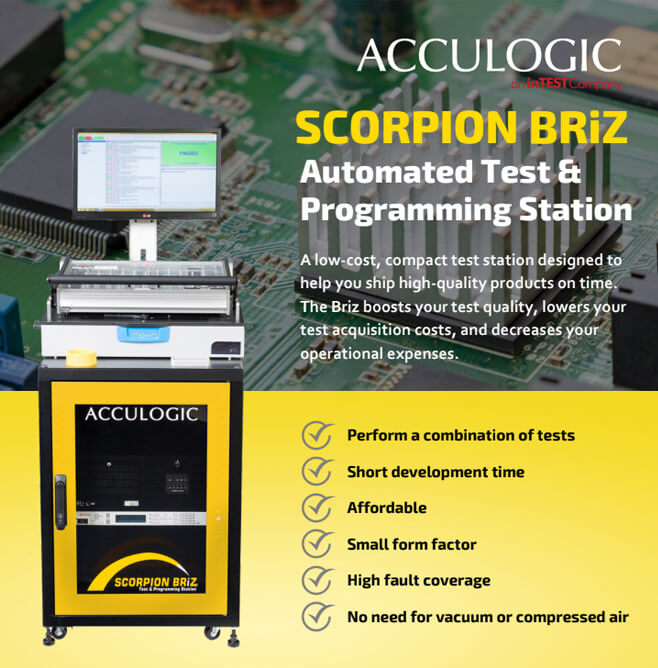Developing effective and maintainable TestStand sequences is crucial for ensuring reliable automated test systems. TestStand, a product by National Instruments, is widely used for automating test and measurement systems. Integrating Acculogic hardware with NI TestStand streamlines the testing process, reducing the need for manual intervention and minimizing test times. Our team follows these best practices and strategies to develop effective and maintainable TestStand sequences.
- Planning and Requirements

- Understand Requirements: Clearly define the test requirements and objectives. Understand what needs to be tested and the expected outcomes.
- Modular Design: Break down the test requirements into smaller, manageable modules. Each module should represent a specific functionality or test case.
- Sequence Structure
- Main Sequence and Sub-Sequences: Use a main sequence to coordinate the test flow and sub-sequences for specific test cases. This makes the sequences easier to manage and understand.
- Step Groups: Utilize Setup, Main, and Cleanup step groups to organize your test steps. Setup for initialization, Main for the core test logic, and Cleanup for teardown and resource release.
- Naming Conventions
- Descriptive Names: Use clear and descriptive names for sequences, variables, and steps. This helps in understanding the purpose of each element at a glance.
- Consistent Naming: Follow consistent naming conventions throughout the sequences to avoid confusion and improve readability.
- Documentation and Comments
- Step Comments: Add comments to each step explaining its purpose and functionality.
- Sequence Documentation: Document the overall sequence flow, inputs, outputs, and any specific configurations required.
- Error Handling and Logging
- Error Handling: Implement robust error handling mechanisms. Use TestStand’s built-in error handling features and customize them as needed.
- Logging: Log critical information and results. This helps in debugging and traceability. Use TestStand’s logging capabilities to log data to files, databases, or other storage systems.
- Reusability
- Code Modules: Create reusable code modules (DLLs, .NET assemblies, LabVIEW VIs) for common functionality. This reduces duplication and improves maintainability.
- Templates and Process Models: Use templates and customize process models for standardizing test sequences across different projects.
- Variable Management
- Scope and Lifetime: Properly manage variable scope and lifetime. Use local variables for step-specific data and parameters for sequence-level data.
- Parameter Passing: Pass parameters between sequences and steps instead of using global variables to minimize side effects and dependencies.
- Version Control
- Source Control Integration: Integrate TestStand sequences and related code modules with a version control system (e.g., Git, SVN). This helps in tracking changes, collaboration, and rollback if needed.
- Versioning: Maintain versioning of test sequences and code modules. Document changes and update version numbers accordingly.
- Testing and Validation
- Unit Testing: Test individual sequences and code modules independently to ensure they work correctly before integrating them into the main sequence.
- System Testing: Perform end-to-end testing of the entire test system to validate the overall functionality and integration.
- Performance Optimization
- Resource Management: Optimize the use of hardware and software resources to avoid bottlenecks and improve test execution speed.
- Parallel Testing: Use TestStand’s parallel execution capabilities to run multiple tests concurrently, where applicable.
- Continuous Improvement
- Feedback Loop: Collect feedback from users and stakeholders to identify areas for improvement.
- Regular Updates: Regularly update and maintain test sequences to incorporate new requirements, fix bugs, and improve performance.
